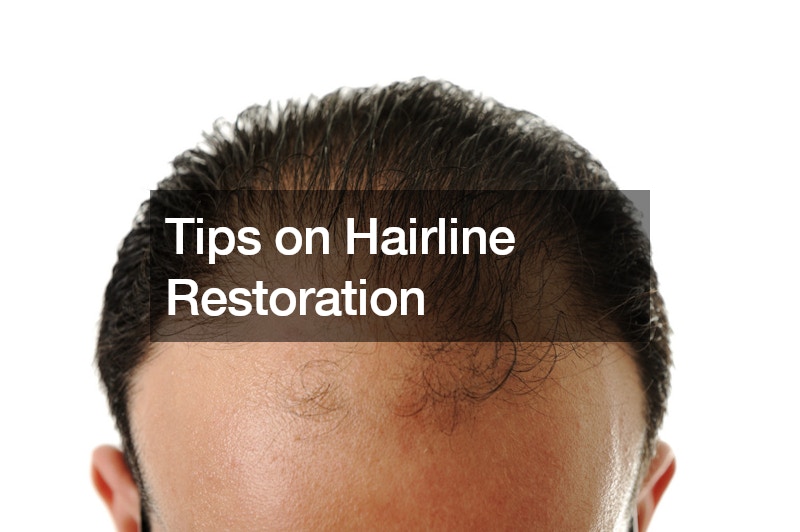Tips on Hairline Restoration


Restoring a receding hairline can significantly boost confidence and improve appearance. With various methods available, choosing the right approach and following best practices can lead to effective and satisfying results. Here are some essential tips for hairline restoration:
Understand the Causes
Before starting any hairline restoration process, it’s crucial to understand the underlying causes of hair loss. Common causes include genetics, hormonal changes, stress, poor diet, and medical conditions.
Identifying the cause can help tailor the treatment to address the specific issue effectively.
Consult a Specialist
Consulting with a dermatologist or a hair restoration specialist is a vital first step. A professional can assess the extent of hair loss, determine its cause, and recommend the most suitable treatment options. They can also provide realistic expectations and guide you through the process, ensuring you choose a method that suits your needs and goals.
Non-Surgical Treatments
1. Topical Treatments
Minoxidil (Rogaine) is an over-the-counter topical treatment that can help stimulate hair growth and slow hair loss. Applying Minoxidil directly to the scalp can be particularly effective for those in the early stages of hair loss. Consistent use is essential to maintain results.
2. Prescription Medications
Finasteride (Propecia) is a prescription medication that can help prevent further hair loss and promote regrowth. It works by blocking the hormone responsible for hair loss. It’s important to discuss potential side effects with a healthcare provider before starting this treatment.
3. Low-Level Laser Therapy (LLLT)
LLLT involves using laser devices to stimulate hair follicles and encourage growth. This non-invasive treatment can be done in a clinic or at home with portable devices. Regular use can help improve hair density and restore the hairline.
Surgical Treatments
1. Hair Transplant Surgery
Hair transplant surgery is a popular and effective method for hairline restoration. The two main techniques are Follicular Unit Transplantation (FUT) and Follicular Unit Extraction (FUE). Both methods involve transplanting hair follicles from the donor area (usually the back of the head) to the thinning or balding areas. Consulting with a skilled surgeon is crucial to achieve natural-looking results.
2. Scalp Micropigmentation (SMP)
Scalp micropigmentation is a cosmetic procedure that involves tattooing tiny dots on the scalp to create the illusion of a fuller hairline. This non-surgical method can be a good option for those who prefer a buzz-cut look or want to enhance the appearance of their hairline.
Lifestyle and Maintenance
1. Healthy Diet
A balanced diet rich in vitamins and minerals supports hair health. Foods high in protein, iron, zinc, and vitamins A, C, and E can promote hair growth and strength. Consider adding leafy greens, nuts, seeds, fish, and lean meats to your diet.
2. Stress Management
Stress can contribute to hair loss. Practices such as yoga, meditation, exercise, and adequate sleep can help manage stress levels and improve overall health, including hair health.
3. Gentle Hair Care
Avoid harsh hair treatments and opt for gentle, sulfate-free shampoos and conditioners. Minimize the use of heat styling tools and chemical treatments, which can damage hair and exacerbate hair loss.
Regular Follow-Ups
Regular follow-ups with your hair restoration specialist are essential to monitor progress and make any necessary adjustments to your treatment plan. Consistent care and maintenance can help ensure the longevity of your restored hairline.
.